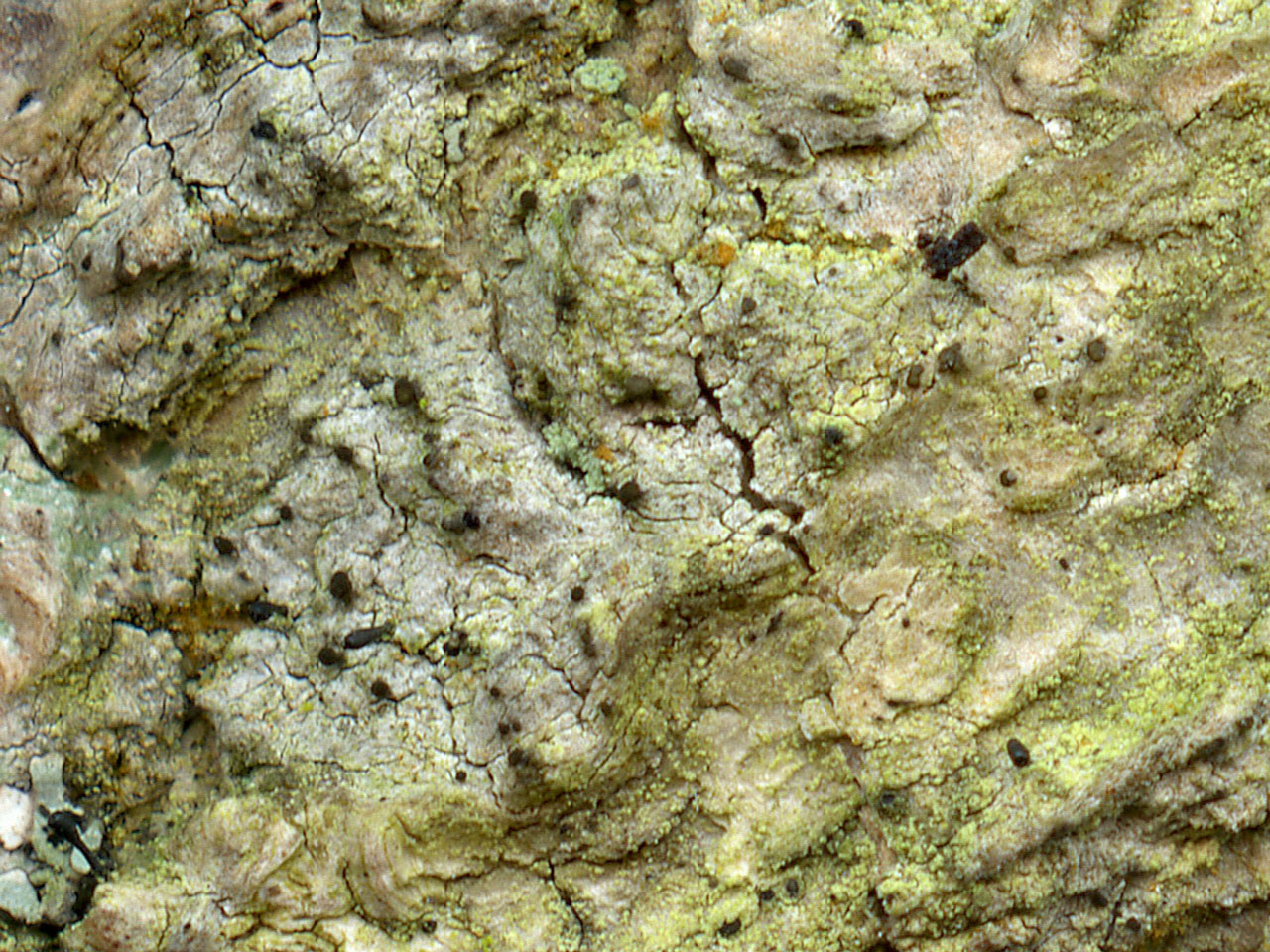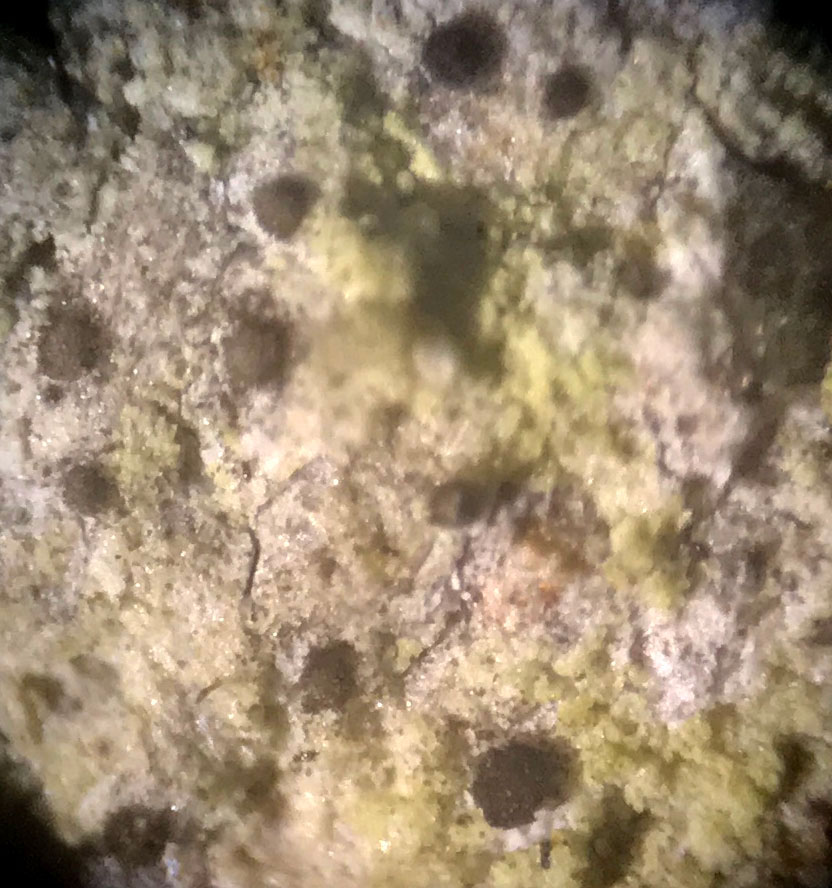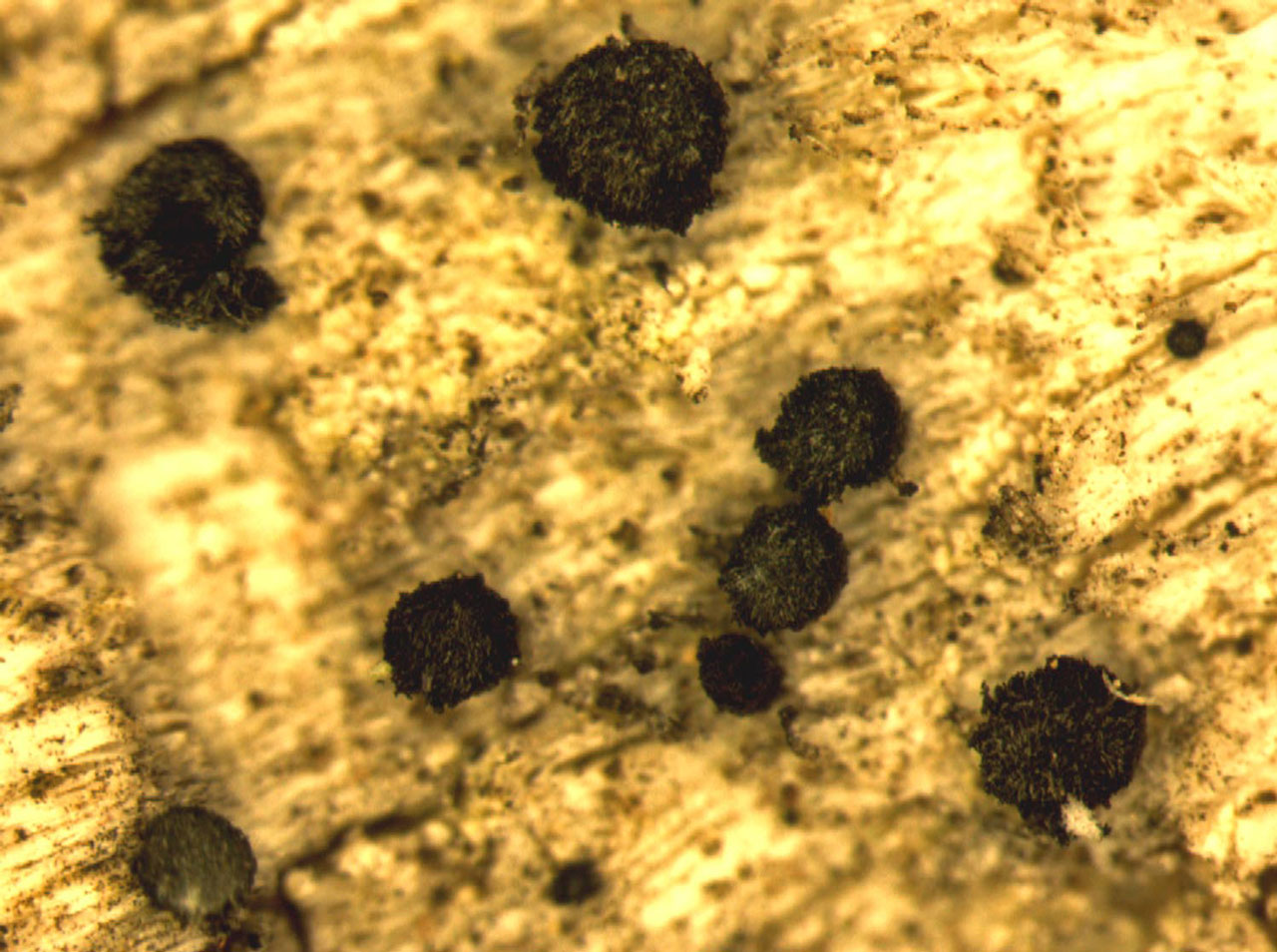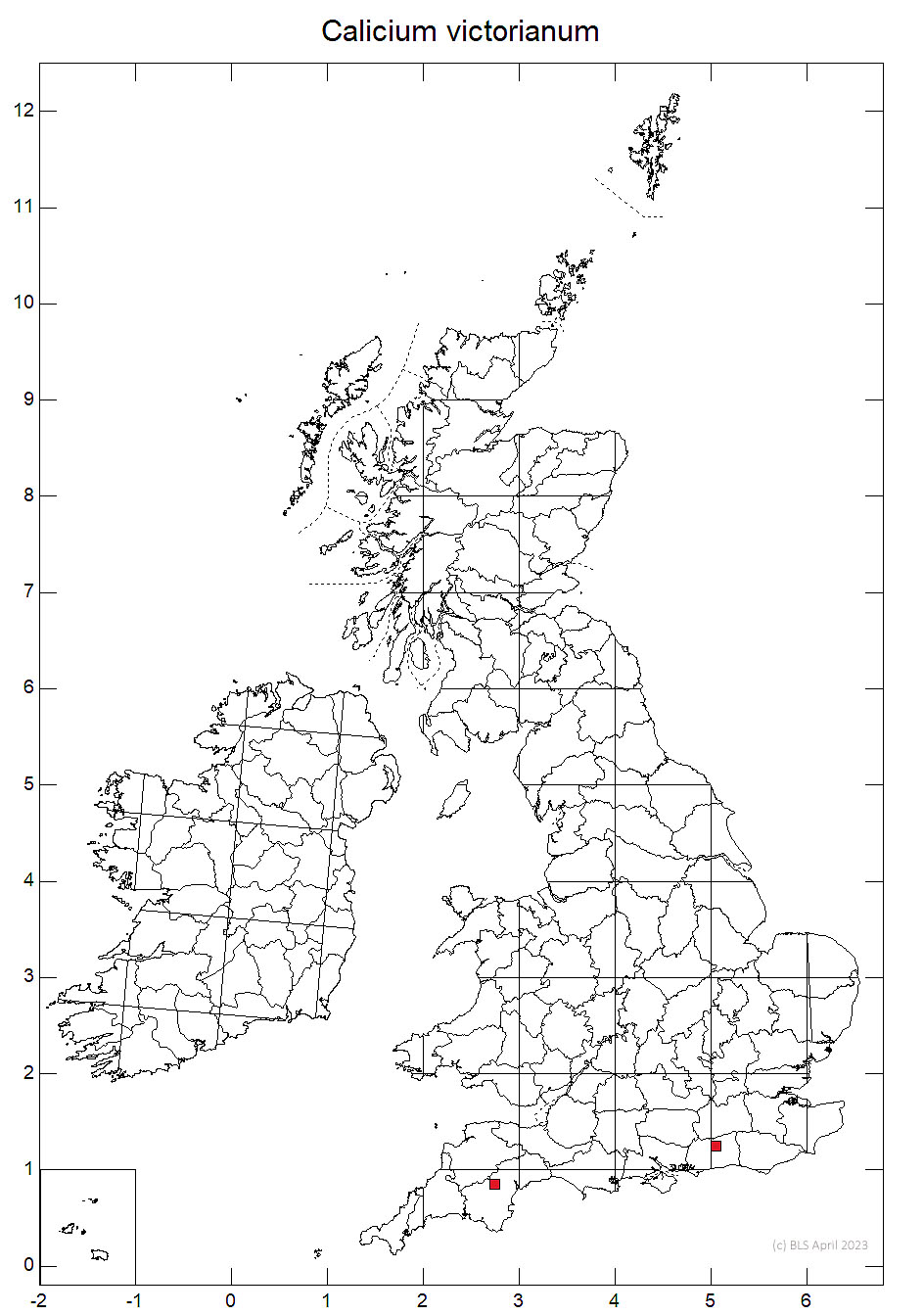Calicium victorianum
A Calicium with a typical mazaedium (a loose spore mass, which makes sooty marks on one’s fingers if touched), but dark brown rather than black and lacking a stalk and with an inconspicuous and immersed thallus. Easily over looked and with only two records, one on a fence post and the other on the bark of an old Holly; probably under recorded. This lichen is only otherwise known from Australia, with the two British records is only known northern hemisphere records.
Thallus immersed, inconspicuous. Apothecia to 0.1 mm tall, short-stalked and often appearing to be ± sessile, black, the mazaedium dark brown, not pruinose, I–; head inverted bell-shaped, 0.2–0.5 mm diam. Asci cylindrical. Ascospores (9–) 11–13 × 4– 6 µm, uniseriately arranged, only slightly constricted at the septum, with fine, irregular warts at maturity. The thallus contains physodalic acid.
Similar to Calicium glaucellum, which has taller apothecia and often a white pruina at the edge of the head. The almost sessile apothecia are likely to cause confusion with Acolium inquinans, which has larger ascospores and a usually well-developed, superficial thallus.
Found once on a wooden fence-post and and once on bark an old Holly in pasture woodland. Normally found on lignum in Australia.

Very rare, records from W. Sussex on a fence post and Dartmoor, S. Devon on an old Holly.
This lichen is only otherwise known from Australia, with the two British records is only known northern hemisphere records. Presumably overlooked, but still likely to be rare.
Britain: Notable
Cannon, P., Prieto, M., Coppins, B., Sanderson, N., Scheidegger, C. & Simkin, J. (2021). Caliciales: Caliciaceae, including the genera Acolium, Amandinea, Buellia Calicium Diploicia, Diplotomma, Endohyalina, Monerolechia, Orcularia, Pseudothelomma, Rinodina and Tetramelas. Revisions of British and Irish Lichens 15: 1-35.
Text by Neil A Sanderson, based Cannon et al (2021)



